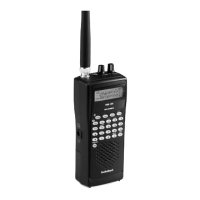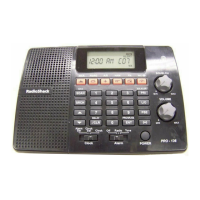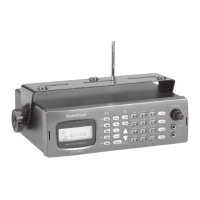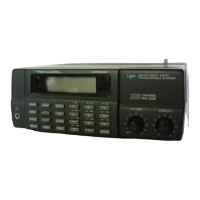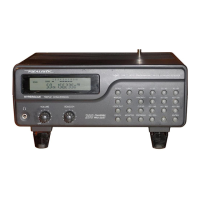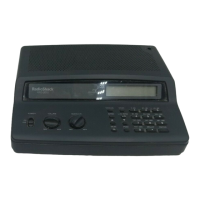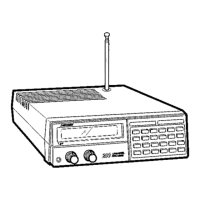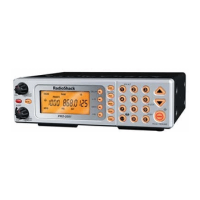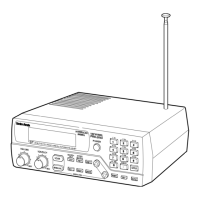Object Searches
creates a new TGRP object in the radio’s memory,
then locks that TRGP object out, so that the
next time it appears on the system, the radio will
ignore any traffic on that TGRP.
To lockout an undesired wildcard hit:
When the scanner stops on an undesired
talkgroup, press the TGL/O softkey.
To unlock or edit talkgroups locked out using
the wildcard lockout feature:
1. Press
PGM to enter Program Mode.
2. Press S, T, W or X to select a locked out
talkgroup.
3. Press FUNC, then L/OUT to remove
permanent lockout from the talkgroup.
or Press FUNC, then CL to delete the TGRP
object from the scanner.
or Press the EDIT, then the CURR softkey to edit
and save the TGRP object.
Object Searches
A powerful feature of your PRO-106 is the ability to
define different types of frequency searches and
process them while scanning. Frequency searches
are just another type of Scannable Object in the
hierarchy of the radio’s memory organization, so they
can be manipulated and scanned in the same manner
as conventional channels and trunking talkgroups.
Limit Search Object (LMIT)
A Limit Search Object (LMIT) is a search object
that stores the parameters necessary for the radio
to search each frequency within a lower and an
upper limit for activity. A LMIT object can be used
for standalone searching—the radio just searches
and stops when activity is detected on a frequency,
or for searching that is performed while the radio
is scanning. The radio treats LMIT objects just like
any other Scannable Object when in Scan Mode.
When used in Scan Mode, this capability is best
suited for small ranges of frequencies that contain
more frequencies than practical to program as
individual channels. Any size range can be used,
but larger ranges that take more time to search
will increase the chances of missed activity on
other object types.
Essential Parameters
FrLo: Lower frequency limits to begin search.
FrHi: Upper frequency limits to end search.
Mode: By default the scanner will automatically
choose the receive mode that most likely applies
to the active frequency as the search proceeds.
Tag: (Recommended) Name your LMIT so you
can easily find or identify it later.
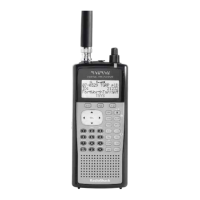
